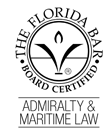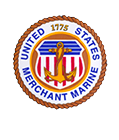Florida Law Applies to Boat Accident Personal Injury Claims in Most Miami-Dade County Canals
 The Federal Eleventh Circuit recently found that a Miami-Dade County canal popular for boating and fishing is not navigable thereby precluding claims based upon Federal admiralty jurisdiction. Since Federal admiralty jurisdiction does not exist, Florida state law, not Federal maritime law applies to boating accidents that occur in many South Florida canals.
The Federal Eleventh Circuit recently found that a Miami-Dade County canal popular for boating and fishing is not navigable thereby precluding claims based upon Federal admiralty jurisdiction. Since Federal admiralty jurisdiction does not exist, Florida state law, not Federal maritime law applies to boating accidents that occur in many South Florida canals.
A privately owned pleasure boat was operating in a waterway known as the Coral Park Canal. While the boat was traveling south, it encountered a bridge with low clearance at the intersection of SW 94th Avenue and SW 8th Street. The operator and four passengers lowered their heads while the vessel passed under the bridge. As the boat emerged from the other side of the bridge, one passenger raised his head and hit a water pipe owned by Miami-Dade County that extended over the canal. The force of the impact ejected the passenger from the boat and into the canal causing a significant personal injury.
The passenger sued Miami-Dade County for negligence in the United States District Court for the Southern District of Florida. His complaint invoked federal admiralty jurisdiction on the ground that the accident occurred on a navigable waterway. The County moved to dismiss the suit for lack of subject-matter jurisdiction. The County argued that in order for admiralty jurisdiction to exist, the waterway must have a navigable connection to Biscayne Bay or the Atlantic Ocean. The trial judge found the canal at the location of the boating accident was not navigable and dismissed the lawsuit for lack of jurisdiction.
The Coral Park Canal is one of the many community drainage canals located in South Florida. The Coral Park Canal joins the larger Tamiami (C-4) Canal. The Tamiami Canal extends eastward past the Miami International Airport and connects to the Miami River. The Miami River leads to the Biscayne Bay and the Atlantic Ocean. Along the Tamiami Canal, between the Coral Park Canal and the Miami River, a series of low-lying bridges, water pipes, and railroad tracks partially obstruct the waterway. None of the bridges can open to allow vessels to pass. Furthermore, many of the bridges are supported by submerged structural columns, narrowing the area a vessel has to pass. Toward the eastern end of the Tamiami Canal sits a water control structure which prevents overdrainage and saltwater intrusion. The structure has mechanical gates that open only underwater. The structure prevents navigation from the western side of the water control structure to the Miami River. A sign is also posted next to the structure reads, “DANGER — NO BOATING BEYOND THIS POINT.”
The issue before the appellate court was whether the canal albeit obstructed by an artificial structure is navigable. The Supreme Court in 1870 defied “navigable waters” to be waterways which are navigable in fact when they are used, or are susceptible of being used, in their ordinary condition, as highways for commerce between states or foreign countries.
 The passenger argued that the trial judge applied the wrong test for navigability in that it only looked to the canal’s current navigability. Instead the passenger articulated that the determinative factor for navigability is not whether the waterway in currently navigable but whether it was historically navigable. This is argument known as the “Indelible Navigability Doctrine” and stands for the principle that once a waterway becomes a navigable water of the United States, it remains a navigable water of the United States. The Eleventh Circuit rejected the application of the Indelible Navigability Doctrine in this instance commenting that the Indelible Navigable Doctrine applies where there is no current commerce occurring on the waterway but the waterway is capable of supporting interstate or foreign commerce. Following its sister circuits, the Eleventh Circuit determined that when artificial obstructions on a waterway block interstate commercial travel, the waterway cannot support interstate or foreign commerce. Since the boating accident occurred west of the water control structure, the Eleventh Circuit affirmed the dismissal of the lawsuit for want of Federal admiralty jurisdiction.
The passenger argued that the trial judge applied the wrong test for navigability in that it only looked to the canal’s current navigability. Instead the passenger articulated that the determinative factor for navigability is not whether the waterway in currently navigable but whether it was historically navigable. This is argument known as the “Indelible Navigability Doctrine” and stands for the principle that once a waterway becomes a navigable water of the United States, it remains a navigable water of the United States. The Eleventh Circuit rejected the application of the Indelible Navigability Doctrine in this instance commenting that the Indelible Navigable Doctrine applies where there is no current commerce occurring on the waterway but the waterway is capable of supporting interstate or foreign commerce. Following its sister circuits, the Eleventh Circuit determined that when artificial obstructions on a waterway block interstate commercial travel, the waterway cannot support interstate or foreign commerce. Since the boating accident occurred west of the water control structure, the Eleventh Circuit affirmed the dismissal of the lawsuit for want of Federal admiralty jurisdiction.
This decision has very important implications to personal injury claims which occur in South Florida canals. Though this case specifically addressed the Coral Park and Tamiami (C-4) Canals, its reasoning applies to several other area canals. Large portions of the Black Creek (C-1), Snapper Creek (C-2), Snake Creek (C-9), South New River (C-11), Earman River (C-17), Loxahatchee Slough (C-18), County Line (C-23), Diversion (C-24), Cutler Drain (C-100), Aerojet (C-111), North (E-4), Central (E-4), South (E-4), Hillsboro (G-08) and North New River (G-15) Canals are blocked to interstate and foreign commerce by water control structures.
Without Federal admiralty jurisdiction, Florida state law, not federal admiralty law applies to boating accidents which occur on these canals. There are significant differences between Florida and Federal maritime law that will impact both plaintiff and defendants. For example, defendants cannot rely upon the Federal Shipowners Limitation of Liability Act as an effort to limit their liability exposure to the post-loss value of the vessel. Plaintiff’s cannot take advantage of the Federal maritime law’s joint and several liability rule in multiple tortfears cases. State governments have the ability to limit their liability to $200,000 per person or $300,000 per occurrence under Florida’s sovereign immunity wavier statute. Owners are held strictly liable for the negligence of those they allow to borrow their boats under Florida’s dangerous instrumentality law.
Since there are such important differences between Florida and Federal maritime law, a person injured on a South Florida canal should consult of a qualified attorney familiar which these types of claims.












